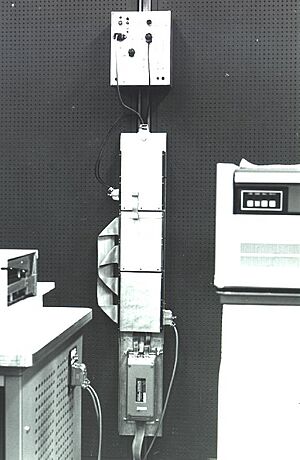Cambridge Ring (computer network) facts for kids
The Cambridge Ring was an early type of computer network. It was developed at the Computer Laboratory, University of Cambridge in the United Kingdom. Work on it began in 1974 and continued into the 1980s. This network helped computers share information and resources with each other.
Contents
What Was the Cambridge Ring?
The Cambridge Ring was a special kind of local area network. This means it connected computers over a small area, like inside a building. It was designed as a "ring network." Imagine computers connected in a circle, like beads on a necklace.
How Information Traveled
The network had a fixed number of small digital "packets" that constantly moved around the ring. Think of these packets as tiny empty cars on a circular track.
When a computer wanted to send data, it would "load" its information into an empty packet. The packet would then travel around the ring. When it reached the correct destination computer, that computer would mark the packet as "received." The packet would continue its journey back to the original sender. Once it returned, the sender would "unload" the data, making the packet empty and ready for new information.
This system meant that several computers could send information at the same time, as long as there were enough empty packets.
Connecting Computers
The Cambridge Ring could theoretically connect up to 255 different computers, or "nodes." However, connecting too many computers would slow down the network. It used special cables called "twin twisted-pair" wires. It also had a section that used fibre-optic cables, which send data using light.
Who Created It?
The Cambridge Ring project involved several important computer scientists. Key people included Andy Hopper, David Wheeler, Maurice Wilkes, and Roger Needham. Their work helped shape early computer networking.
Its Legacy
In 2002, the Computer Laboratory at the University of Cambridge launched a group for its graduates. This group is called the Cambridge Computer Lab Ring. It was named in honor of the original Cambridge Ring network.
See also


